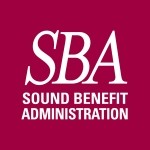A Premium Only Plan (POP) is also known as a Section 125 plan or Cafeteria Plan where employees pay for out-of-pocket medical, dental or vision insurance premiums with pre-tax dollars through payroll deduction. While these are the simplest form of Section 125 plans, they are still subject to ERISA reporting and disclosure requirements, including:
- Employers must have a plan document in place,
- A Summary Plan Description must be given to each participant,
- Non-discrimination testing must be conducted and,
- Depending on the administrative method the employer choses, participants may be required to complete election forms.
This is where the choice comes in and this article examines the two main administrative methods an employer might select and why.
Two options for employee elections
Option 1- Affirmative elections: With an affirmative election, employees must “elect” to participate in the POP plan by completing an election form or electronic election on a timely basis upon enrollment or at plan renewal. From a compliance perspective, affirmative elections are the cleanest option because “a plan is not a POP plan unless it provides in writing that employees are permitted to make elections among the permitted taxable benefits and qualified benefits offered through the plan for the plan year.” Therefore, by obtaining an employee’s affirmative written agreement on a timely basis, every year, clearly constitutes an acceptable election.
We, at Sound Benefit Administration (SBA), prefer to use affirmative elections initially at enrollment and at each renewal. One primary reason is that these forms remind participants they must have an eligible qualifying event to change their contributions mid-year. Sometimes a participant will forget that fact when facing a financial hardship. Our election forms list all the eligible change of status reasons and, more importantly, that financial hardship is NOT an eligible qualifying event to drop coverage for themselves or their dependents mid-plan year. It’s a good reminder for participants and helps them make a more informed decision about enrolling in the POP plan.
Option 2 – Evergreen automatic elections: In this case, each new employee is automatically enrolled in the POP plan (payroll deductions made pre-tax) unless they decline to participate in the POP opting to have their payroll deductions for premiums made post-tax. Every year thereafter, their original election/non-election is automatically renewed. With this method, the employer is required to provide a detailed notice to the employee at each benefit renewal time which includes:
- An explanation of the automatic enrollment process and the employee’s right to decline coverage and have no salary reduction,
- The salary reduction amounts for employee-only coverage and family coverage,
- Procedures for exercising the right to decline coverage,
- Information on the time by which an election must be made,
- The period for which an election will be effective,
- Benefit menu changes and changes in employee contribution rates; and
- For a current employee, a description for the employee’s existing coverage, if any.
An employer using evergreen election as their administrative choice needs to make sure to provide a notice that meets the above requirements and should confirm that its plan documents, election forms, and enrollment procedures otherwise follow the parameters of any regulations and revenue rulings. We would strongly suggest that, any employer using this method retains adequate documentation in an employee’s file that an initial election opportunity was given when they were a new hire.
The need for negative elections
With either choice, if an employee opts out of the plan, the employer needs to keep the waiver documentation on file. Typically, there are only two valid reasons to waive coverage under a POP: 1) a concern about not contributing to the employees’ Social Security Account or 2) enrolling with the intention of dropping coverage mid-year due to financial hardship (not a qualifying reason under POP change of status rules).
Further, employers subject to the Affordable Care Act’s employer shared responsibility provisions (i.e. applicable large employers) should ensure that they provide an adequate opportunity for an employee to opt in or out of medical coverage; otherwise, the requirement to offer coverage at least once a year (or to offer a chance to decline coverage that fails to meet minimum value or affordability requirements) will not be satisfied.
The states also have their own requirements. Regardless of which type of election is employed, the employer should check the impact of state wage-withholding laws (e.g. California). Many such laws require employers to get written authorization from employees before withholding amounts from their pay. Some states have more than one wage-withholding law-for example, a final paycheck rule and a different rule for all other paychecks.
So, while a Premium Only Plan is still considered one of the most basic features of a Cafeteria Plan, it is important to follow the rules and requirements to prevent compliance issues down the road. If you or one of your clients would like a review of their POP and its procedures, I’d be happy to help!
Source: EBIA Cafeteria Plan manual
